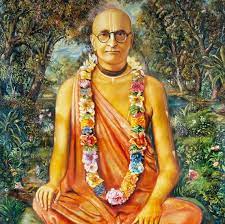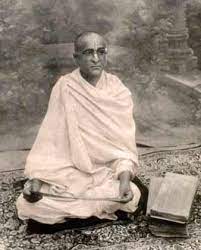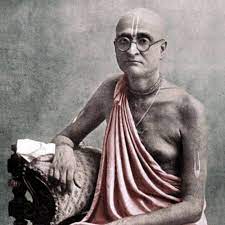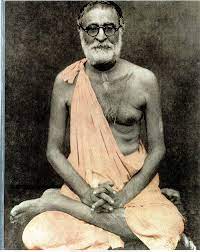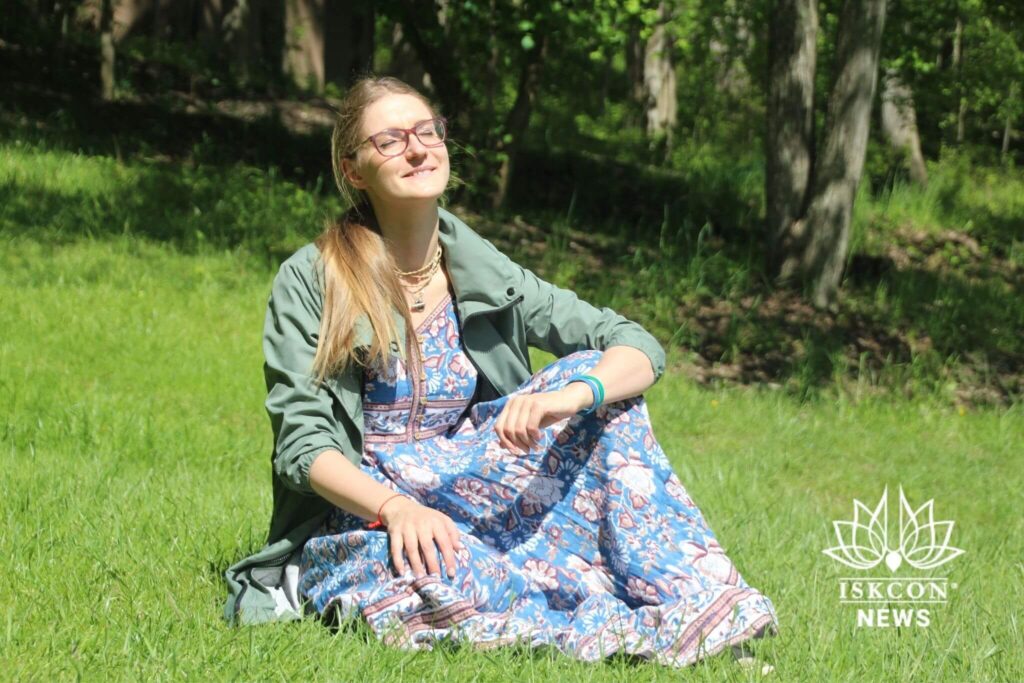I would like to start by offering my respectful obeisance unto all those who love or respect Srila Prabhupada and desire to see his mission succeed, regardless of their level of practice, philosophical persuasions, and institutional affiliations. I am a neophyte on the devotional path, but I hope you will accept any truth you perceive in what I share here. As Srila Prabhupada said, the wise take gold even from a filthy place.
I see our movement suffering because of various conflicts and polemics, and many individual devotees also suffer despite practicing Krishna consciousness. This may be due to not properly understanding what should or should not be done, or to difficulty in controlling the mind and senses, or perhaps in cultivating loving spiritual relationships.
I believe that the key to resolving our institutional and individual difficulties is improving the culture of sadhu sanga within ISKCON. I see the GBC is trying to protect the institution by controlling some of our important decisions with legislation, such as by controlling the process of diksha. I believe they have also stipulated certain ‘official’ philosophical positions, for example around whether we were ever with Krishna, and more recently I understand they have introduced a code of ethics.
There may be other areas of which I am unaware, I believe that an ‘ISKCON Law Book’ is being compiled, and I fully accept that all this is with the honest desire to maintain the highest standards in our society. However, with a straw between my teeth, I humbly suggest that we replace the tendency to control devotees’ decisions with better training in the culture of good sadhu sanga. Srila Prabhupada famously told Karandhara not to centralize control over any aspect other than book printing and distribution. In all other areas, devotees must be trained to think for themselves. He explicitly warned that attempts to centrally control other decisions would spoil everything.
Do not centralize anything. Each temple must remain independent and self-sufficient. That was my plan from the very beginning, why you are thinking otherwise? Once before you wanted to do something centralizing with your GBC meeting, and if I did not interfere the whole thing would have been killed. Do not think in this way of big corporation, big credits, centralization—these are all nonsense proposals. Only thing I wanted was that books printing and distribution should be centralized, therefore I appointed you and Bali Mardan to do it. Otherwise, management, everything, should be done locally by local men. Accounts must be kept, things must be in order and lawfully done, but that should be each temple’s concern, not yours. Krishna Consciousness Movement is for training men to be independently thoughtful and competent in all types of departments of knowledge and action, not for making bureaucracy. Once there is bureaucracy the whole thing will be spoiled. Letter to Karandhara in Dec ‘72
Of course, this admonishment related specifically to a plan to centralize administration, butstill, Srila Prabhupada said that our movement should be training us to be “independently thoughtful.” In SB 9.10.50 purport, he points out that even nation-states that have the power to physically punish their citizens cannot make them good just by passing and enforcing laws.
“Simply enforcing laws and ordinances cannot make the citizens obedient and lawful. That is impossible. Throughout the entire world there are so many states, legislative assemblies and parliaments, but still the citizens are rogues and thieves. Good citizenship, therefore, cannot be enforced; the citizens must be trained.”
From this, I understand that a more effective way of protecting ISKCON and ensuring good behaviour from its members is through training. Training in what? Srila Prabhupada gives the answer to that question in SB 3.3.6 purport:
“…unless and until one is trained in the culture of good association, one cannot become good.”
Good association is sadhu sanga. Good association means to hear about and glorify Krishna in the association of devotees.
…hearing and chanting of the glories of the Lord can be made possible in the association of devotees only. Lord Caitanya therefore recommended five main principles for attaining perfection in the devotional service of the Lord. The first is association with devotees (hearing); SB 2.9.31 purport
On several occasions Srila Prabhupada instructed ISKCON leaders to concentrate on improving the culture of good association in ISKCON:
Your first job should be to make sure that every one of the devotees in your zone of management is reading regularly my literatures and discussing the subject matter seriously from different angles of seeing, and that they are somehow or other absorbing the knowledge of Krishna Consciousness philosophy. If they are fully educated in my philosophy and if they can get all of the knowledge and study it from every viewpoint, then very easily they will perform tapasya or renunciation and that will be their advancement in Krishna Consciousness. Letter to Satsvarupa Maharaja ‘72
So I want you leaders especially to become very much absorbed in the philosophy of Bhagavad-gita, Srimad-Bhagavatam, and become yourselves completely convinced and free from all doubt. On this platform you shall be able to carry on the work satisfactorily, but if there is lack of knowledge, or if there is forgetfulness, everything will be spoiled in time. So especially you must encourage the students to read my books throughout the day as much as possible, and give them all good advice how to understand the books, and inspire them to study the things from every point of view. In this way, by constantly engaging my tongues in the service of the Lord, either by
discussing His philosophy or by chanting Hare Krishna, the truth is that Krishna Himself will reveal Himself to us and I shall understand how to do everything properly. Now I have got so many students and so many temples but I am fearful that if I expand too much in this way that I shall become weakened and gradually the whole thing will become lost. Just like milk. I may thin it more and more with water for cheating the customer, but in the end it will cease to be any longer milk. Better to boil the milk now very vigorously and make it thick and sweet, that is the best process. So let us concentrate on training my devotees very thoroughly in the knowledge of Krishna Consciousness from my books, from tapes, by discussing always, and in so many ways instruct them in the right propositions. Letter to Hansadutta, 22/6/’72, Los Angeles.
—-
The correct culture of good association is called vada, as opposed to vitanda and jalpa. These terms are defined in Baladeva Vidyabusana’s Govinda Bhasya commentary to 10.32.
When both parties desire to win by establishing their own opinion with proofs and arguments, and by refuting the opponent’s view with circumvention….false generalization…and syllogistic fault…it is called jalpa. When one party refutes the opponent’s view (by the above means), without establishing his own opinion, it is called vitanda. These two types of debate, with a desire to win, simply display skill in debating and bear no result. That discussion having a desire for truth is called vada. Being outstanding for being fruitful in determining truth, vada is My vibhuti.”
This I feel is an extremely important point which I would like to explore further in future articles, trying to elucidate the above passage and demonstrate how jalpa and vitanda frequently mar discussions within ISKCON.
For now, I would like to touch on some of the many instructions that Srila Prabhupada gives regarding the culture of good association. For a fuller delineation of his instructions on this topic, kindly see the ‘Principles’ menu on . According to Srila Prabhupada only a devotee can teach us how to discuss according to the principles of vada.
In order to become really learned, we have to associate with devotees. Then we can actually relish kṛṣṇa-kathā. When discussed among devotees, kṛṣṇa-kathā is pleasing to the heart and ear. This requires a little training, and this training is given by the devotees. TLK chp 12
For us, the most qualified person to teach us is Srila Prabhupada himself. Here are some items of good sadhu sanga that I have seen in his teachings:
1. Discussing is better than passive reading or hearing:
Generally, people cannot understand. But if one understands, he becomes liberated. If some way or other… It is not very difficult; simply we have to associate with devotees and discuss this literature. Then we’ll understand Kṛṣṇa very easily. (Lecture 5/6/’76)
2. We should become practiced in seeing from different perspectives (not just our own):
“I am very much stressing nowadays that my students shall increase their reading of my books and try to understand them from different angles of vision. Each sloka can be seen from many, many angles of vision, so become practiced in seeing things like this.” (letter to: Tribhuvanatha — Los Angeles 16 June, 1972)
3. We should speak very respectfully to each other, and always cite scriptural evidence:
The process of speaking in spiritual circles is to say something upheld by the scriptures. One should at once quote from scriptural authority to back up what he is saying. At the same time, such talk should be very pleasurable to the ear. By such discussions, one may derive the highest benefit and elevate human society. (BG 17.15 purport)
4. We should repeat what we read in our own words:
It is not very difficult. Just read from my books and try and explain the meaning in your own words. (letter to Sudama; 26/01/’73)
There are many benefits if we practice sadhu sanga correctly. Here are some of those benefits delineated in BG, SB and directly by Srila Prabhupada.
In BG chapter 109-11, Krishna says:
The thoughts of My pure devotees dwell in Me, their lives are fully devoted to My service, and they derive great satisfaction and bliss from always enlightening one another and conversing about Me.
To those who are constantly devoted to serving Me with love, I give the understanding by which they can come to Me.
To show them special mercy, I, dwelling in their hearts, destroy with the shining lamp of knowledge the darkness born of ignorance.
SB 11.3.30-31 Śrī Prabuddha says:
One should learn how to associate with the devotees of the Lord by gathering with them to chant the glories of the Lord. This process is most purifying. As devotees thus develop their loving friendship, they feel mutual happiness and satisfaction. And by thus encouraging one another they are able to give up material sense gratification, which is the cause of all suffering.
The devotees of the Lord constantly discuss the glories of the Personality of Godhead among themselves. Thus they constantly remember the Lord and remind one another of His qualities and pastimes. In this way, by their devotion to the principles of bhakti-yoga, the devotees please the Personality of Godhead, who takes away from them everything inauspicious. Being purified of all impediments, the devotees awaken to
pure love of Godhead, and thus, even within this world, their spiritualized bodies exhibit symptoms of transcendental ecstasy, such as standing of the bodily hairs on end.
Srila Prabhupada writes to his disciple Bhagavatananda in ’72:
“Try to always study my books and see my philosophy from different lights of directions, become convinced yourself of this knowledge and without a doubt all of your difficulties of mind will disappear forever and you will see Krishna face-to-face.”
If we find that our attempts to resolve conflicts or confusions turn into polemics it is probably because we are not applying the culture of good association. One or both parties may be resorting to circumvention, faulty syllogisims and false generalisations as mentioned above. Such discussion will not help us become either individually or collectively happy and successful.
Srila Prabhupada saw sastra discussion as critical to our spiritual progress. He warns us of the danger of minimizing it:
“If you are not interested in association, discussion, then you are finished. So? Karmis, they are fools and rascals. When you have got this center, it is not that you should be engaged from morning till you go to bed for sense gratification. That is not life. That is karmi’s life. You have no time for sat-sanga, for association. You cannot make any progress by this sort of karmi’s life. We have to work for organization, but not that whole day and night engaged and no sat-sanga. That is a misguided policy, and it will spoil the whole structure.”
Room Conversation on Srimad-Bhagavatam 1.10.11– November 3, 1973, Delhi
“We have to hear and we have to speak. But if we are not interested in hearing and speaking, then it will be simply formula. That’s all. And gradually it will be stopped. Unless there is life of sravanam kirtanam, these big, big building, temples, will become burden. So if we are…, if we want to create burden for future, then we may give up this hearing and chanting and sleep very nicely. It will be burden. Galagraha. Not sri-vigraha, but galagraha. Galagraha. Sri-vigraha means worshipable Deity. So if we give up this sravanam kirtanam visnoh [SB 7.5.23], then it will be thought that “My Guru Maharaja has given a burden in the neck, galagraha.” This is the danger. So we must be very much alert in sravanam kirtanam. Otherwise, all this labor will be futile. This building will be only the nest, nest for the doves and the pigeons. That is the danger. That is being done. Nobody is interested.”
lecture on Srimad-Bhagavatam 1.8.19 — September 29, 1974, Mayapur
I believe that by focusing on training all devotees in the culture of discussing sastra according to the principles Srila Prabhupada himself outlines, we will be able to:
1: find solutions to the conflicts which threaten to divide us.
2: cultivate loving relationships.
3: help devotees become independently thoughtful and able to discern according to scripture so they can make spiritually healthy decisions in their lives.
4: enable devotees to authentically improve their mind and sense control.
5: and create a future in which there will be many devotees qualified to guide newcomers on the spiritual path. “One who is very eager to hear, he can become, in future, the spiritual master. ” lecture on SB 1.2.14-16; 27/03/’67; San Francisco.
I pray that ISKCON’S leaders will give this serious thought. I also pray that individual devotees proactively take steps to improve their own sadhu sanga practices by looking at the principles, useful tips, and discussion videos showcasing this approach to improving sanga.
Hare Krishna
The post A Sugesstion for Resolving Our Conflicts appeared first on ISKCON News.
The post A Sugesstion for Resolving Our Conflicts appeared first on ISKCON News.




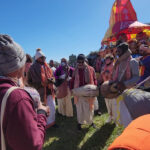


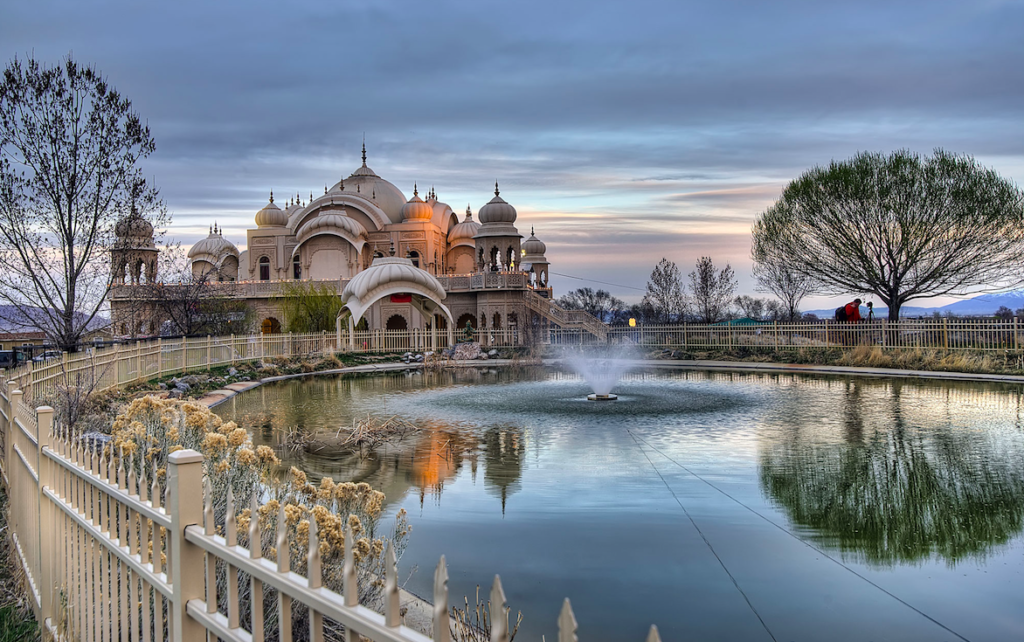
 By Mayapur Sasi dasa
By Mayapur Sasi dasa